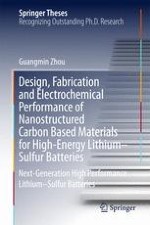This book focuses on the design, fabrication and applications of carbon-based materials for lithium-sulfur (Li-S) batteries. It provides insights into the localized electrochemical transition of the “solid-solid” reaction instead of the “sulfur-polysulfides-lithium sulfides” reaction through the desolvation effect in subnanometer pores; demonstrates that the dissolution/diffusion of polysulfide anions in electrolyte can be greatly reduced by the strong binding of sulfur to the oxygen-containing groups on reduced graphene oxide; manifests that graphene foam can be used as a 3D current collector for high sulfur loading and high sulfur content cathodes; and presents the design of a unique sandwich structure with pure sulfur between two graphene membranes as a very simple but effective approach to the fabrication of Li-S batteries with ultrafast charge/discharge rates and long service lives.
The book offers an invaluable resource for researchers, scientists, and engineers in the field of energy storage, providing essential insights, useful methods, and practical ideas that can be considered for the industrial production and future application of Li-S batteries.
